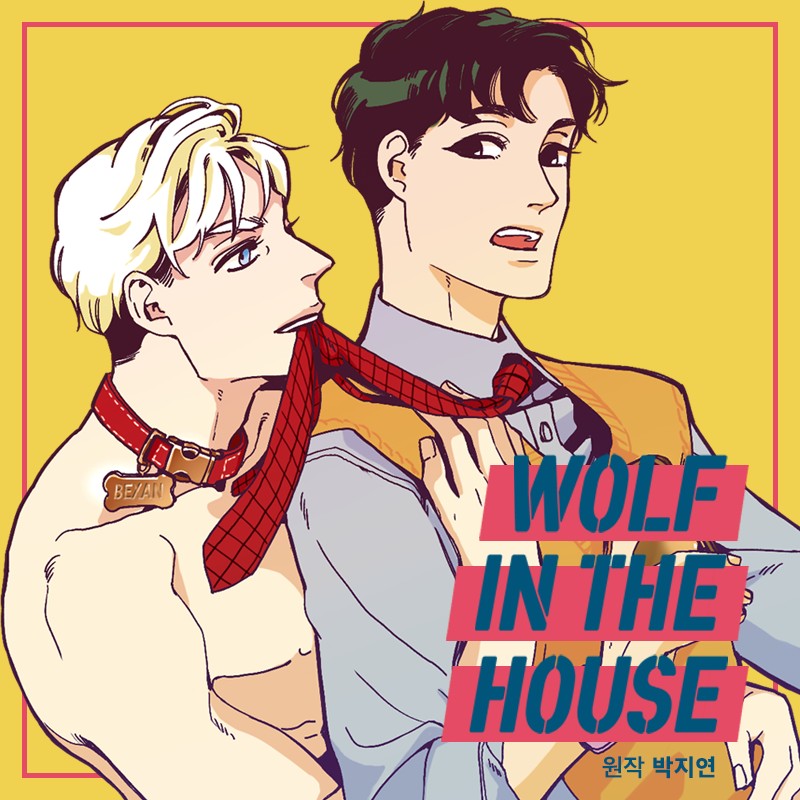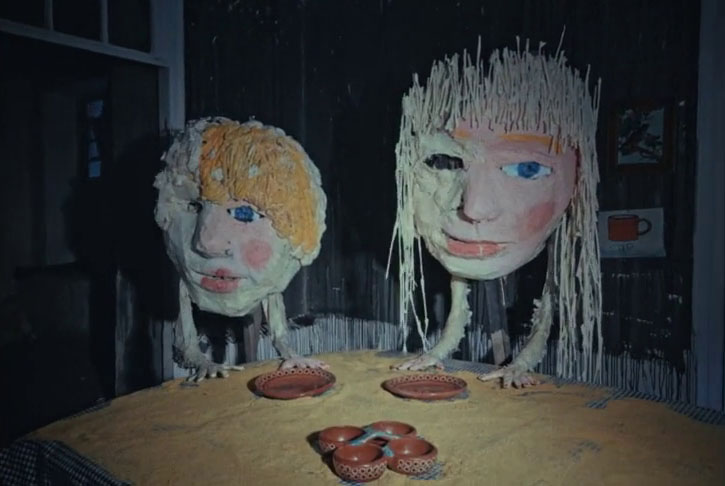INTERVIEW: Animated film 'Wolf House' depicts horrors under Pinochet regime
Table Of Content
The film provides very little context and almost no explanations. With the confusing nature of the movie in mind, let’s take a look at what you need to know to really understand the Chilean stop-motion film. Surreal, unsettling, and finally haunting, The Wolf House is a stunning outpouring of creativity whose striking visuals queasily complement its disturbing story. As the secluded household begins to run out of food, Ana and Pedro become increasingly hostile and secretive toward María. María, afraid to confront them, instead tries to leave the house and pick apples in the woods.
Recently viewed
After paying the fee, there are two parking lots, one that goes to the Wolf House and museum while the other goes to the cottage and silos. If you are looking for a place to hike and explore in the Sonoma Valley, then head over to the beautiful Jack London State Historic Park. Built on the property owned by the famous author, this park has miles of trails, lots of historic structures, and tons to explore. Here is all the information on the places I visited in the park, which include the Wolf House (historic mansion that burned down), the silos, the museum, the cottage, and the pig palace. It might just be powerful for you because of the disturbing visual style that makes you squirm in your seat. The wolf has long been a symbol of evil in literature, and on the surface, the wolf in this movie is obviously meant as a parallel to the Big Bad Wolf from the story of Little Red Riding Hood.
It’s It Ice Cream Factory in San Mateo
Collared wolf reportedly spotted near home in Colorado - The Denver Gazette
Collared wolf reportedly spotted near home in Colorado.
Posted: Fri, 05 Jan 2024 08:00:00 GMT [source]
This is powerful and uniquely disquieting cinema that should reward the curiosity of those brave enough to seek it out, but you can only stare into a bottomless abyss for so long before you lose the will to keep looking. But even if your eyes glaze over, there’s no denying the horrible truth of how Maria’s story continues to play out. “The Wolf House” reminds us that fairy tales are powerful because, once upon a time, we were all young enough to believe them.
Latest Film News
He is a constant dark presence lurking outside of Maria’s house, and at one point there’s even a mention of huffing and puffing. The co-directors, Joaquín Cociña and Cristobal León, did the ultra-painstaking animation themselves and it’s a wonder they weren’t driven insane in the process (although, come to think of it, one can’t authoritatively say they weren’t). Comparisons with visionary animators like Jan Svankmajer and the Quay Brothers might not be inapt, but they also won’t do the trick — these filmmakers have a perspective and a voice that feels entirely new. The film surprises, with incredible force, in every one of its 75 minutes. If the above description of solitary confinement seems spine-tingling or too close to the bone during the days of the Covid-19 isolation, wait for what else León and Cociña have in store.
We try to create something that shows you all bones, fibers and blood. It might be hyperbolic or unhelpful to label Cristóbal León and Joaquín Cociña’s “The Wolf House” as the darkest animated movie ever made, but merely describing this stop-motion nightmare should be enough to explain the impulse. In a brief closing narration, the wolf says María regained her helpful and hardworking spirit once she returned home. He offers to take the "little pigs" in the audience home to the Colony, where he promises he will care for them.

Few movies have more palpably conveyed the innocence of children or the nausea of tainting it, and fewer still have done it this fast. At 30 minutes, “The Wolf House” would have left people shaken — at 72, it might just make you feel sick. She is welcomed by two pigs, the only inhabitants of the place. Like in a dream, the universe of the house reacts to Maria's feelings and shapes itself into her ideal home. The pigs transform slowly into humans whom she names Ana and Pedro. Although the wolf's presence outside makes it impossible for any of them to leave, the group lives happily for a short time.
Perhaps comparing it to a David Lynch film can come close to characterizing the experience. And one’s viewing of it might greatly benefit from some Wikipedia-level familiarity with the history of Colonia Dignidad (the Dignity Colony), a remote, Chile-based Nazi sect founded after the World War II, which loosely lends the film its basic narrative. While it was supposedly formed to represent a simple agricultural lifestyle, the cult was known for its torture practices and murders, especially during the Pinochet regime, as well as its longtime leader Paul Schäfer, a convicted pedophile and notorious criminal.
Sign In
So, when Jack started building his dream house in 1911, it was only fitting that it would become known as the “Wolf House”. Construction was nearly complete when a fire began late on the night of August 22, 1913, spreading rapidly and gutting the interior of the house—only the massive masonry walls remained standing by the morning. Although arson was suspected, no substantial evidence was ever discovered. In 1995, a forensic team of investigators concluded that the likely cause was the spontaneous combustion of linseed oil soaked rags left behind by workmen.

The characters and many of the props are constructed out of papier-mâché, an unusual animation medium that proves fitting to depict the fragility and malleability of a dreamlike world. The action freely flows between 2D and 3D, the characters alternately depicted as paintings on walls, live figures in the space, or in some unsettling in-between state. The Wolf House looks like no other film, which makes its horrific imagery all the more difficult to shake from your head. A clue to make sense of this nightmarish fever dream is fed to us right at the beginning, as we view what appears to be propaganda footage of a southern Chilean cult known as the Colony, where its German inhabitants lived close to nature in alleged harmony. In order to dispel the nasty rumors that have spread regarding the community—none of which are specified—the Colony has delved into its vaults to present us with the following indoctrination video designed to venerate the purity of their lifestyle. Indeed, one can imagine cult members toiling away on this meticulous spectacle as ordered by their tyrannical leader, whose seductive voice takes the form of a wolf (Rainer Krause), while the pervasive sickness of their ideology inadvertently creeps into every frame.
There is a sign that talks about how he wanted to be buried at the top of the hill with a rock put over him from the house. That is precisely what his wife did, and you can see the rock and his gravesite here. The short tenth of a mile split takes you up a hill to the final resting place of Jack London. This building has loads of information the Londons, including first additions of his books, a movie about their life, and two floors of exhibits. I was interested in the layout of the Wolf House that he planned to build since that is where we were hiking next.
Wolf House enters Phase III of development - Baxter Bulletin
Wolf House enters Phase III of development.
Posted: Fri, 08 Dec 2023 08:00:00 GMT [source]
Maria’s life is a tale being used to show that the German community is nothing like those awful rumors that you may have heard. If an Orwellian fable were to be visualized by a surrealist in the vein of Salvador Dali, the result would look and feel something like “The Wolf House,” a jaw-dropping marriage of various animation techniques, chiefly stop-motion. Audiences will frequently ask themselves, “How on earth did they pull that off?
Despite Maria trying hard to run away from the Colonia and escape her past, the wolf at the door catches up with both her and her children in the end. Much like Paul Schäfer and the rest of the Nazis at the Colonia, Maria’s pursuit of purit was constantly at threat from her own guilt, and everything fell apart due to it at the end. As Chile descended into fascism under Augusto Pinochet’s rule in the 70s, things at the Colonia became darker and more violent. Rather than just being a cult in the woods, it was transformed into an internment camp for political dissidents.
The film unfolds as a single continuous sequence, the camera and the animation constantly in motion, with the walls surrounding Maria pulsating as she melts into them. Her body crumbles as papier-mâché and rebuilds itself in pieces of silicone. Maria and the pigs will be paintings on the cabin’s walls one moment and three-dimensional puppets the next. The paint on the surface of a puppet that imbues it with life will melt off onto the floor, leaving the character drained and ghostly. These techniques create a sense of claustrophobia, but in a peculiar way; the walls are not closing in but rather perpetually remaking themselves, yet never with a way out. It’s often difficult to tell whether it is the camera that’s moving or the backgrounds, as a bathroom breaks apart tile by tile and reconstructs into a dining room.
And so we embark on Maria’s psychedelic misadventures when she flees the pressures of her clan and finds refuge in a remote home. With no living soul on her side other than two of the pigs whose escape she facilitated, the lonesome Maria soon realizes her sentient shelter responds to her fears, desires and thoughts, modifying itself accordingly every waking second. There also seems to be a wolf somewhere out there, spying on Maria in an utterly Big Brother-esque fashion. The kaleidoscopic animated fable follows Maria, a girl who ran away from The Colony to avoid punishment for allowing three pigs to escape from their pen.
Comments
Post a Comment